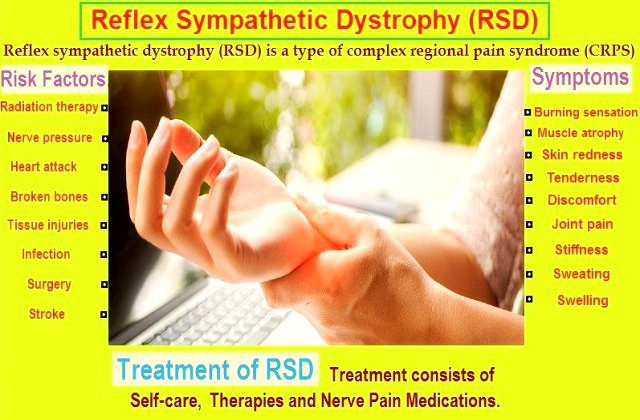Contents
Algodystrophy: prevention and treatment
Prevention of algodystrophy
Basic preventive basic preventive measures |
|
Medical treatments for algodystrophy
There is no specific treatment for dystrophy. A combination of physiotherapy treatments and certain medications are found in some people to reduce pain and maintain joint mobility.
Treatments are most effective when started soon after the onset of the disease. They can slow the progression of the disease and sometimes make the symptoms disappear completely.
Most adolescents with the condition recover completely. Some people, despite treatment, still have constant or crippling pain, as well as some irreversible external changes.
Rehabilitation. A proper exercise program helps keep sore limbs active and can improve blood circulation. Exercises can improve flexibility and strength in affected limbs.
TENS (Tanscutaneous electrical nerve stimulation). This is a treatment using a device that sends small electric shocks through the nerves to numb the pain.
Aquatherapy. Aquatic exercise programs are particularly effective. Many patients are temperature sensitive and are more comfortable in hot water to do their exercises.
Psychotherapy. People who suffer from constant pain can develop depression or anxiety which affects their lives and families. Psychological support is sometimes necessary in order to help people with the disease manage their daily lives and facilitate their rehabilitation.
Medicines to reduce pain
Different combinations of drugs can be effective in relieving the symptoms of complex regional pain syndrome. The effectiveness of treatments may vary from person to person.
- NSAIDs to reduce pain and inflammation: Aspirin, iburpofen (Advil®, Motrin®), naproxen (Aleve®).
- Corticosteroids to treat inflammation and swelling: prednisolone and prednisone.
- Tricyclic antidepressants: amitriptyline or nortriptyline.
- Botulinum toxin injections.
- Opioids: Tramadol®, morphine.
- Topical numbing creams: lidocaine and ketamine.
- Serotonin-norepinephrine reuptake inhibitors: venlafaxine or duloxetine.
- Gabapentin (Neurontin®, an anticonvulsant) and pregabalin (Lyrica®, an anticonvulsant and pain reliever)
- Calcitonin or bisphosphonates are useful in helping to maintain or strengthen bone density.
Injection therapies
Various injection or block therapies involve injecting a substance that temporarily and locally inhibits the activity of the sympathetic nervous system in order to block the sensation of pain. Truncal anesthesia and regional intravenous block are sometimes used.
Other more invasive and therefore riskier methods include neurostimulation, intrathecal infusion of clonidine, and stimulation of a region of the spinal cord.
People with very severe pain that lasts a long time usually respond less well to treatment. These people sometimes need to follow a treatment program tailored to their chronic pain.










